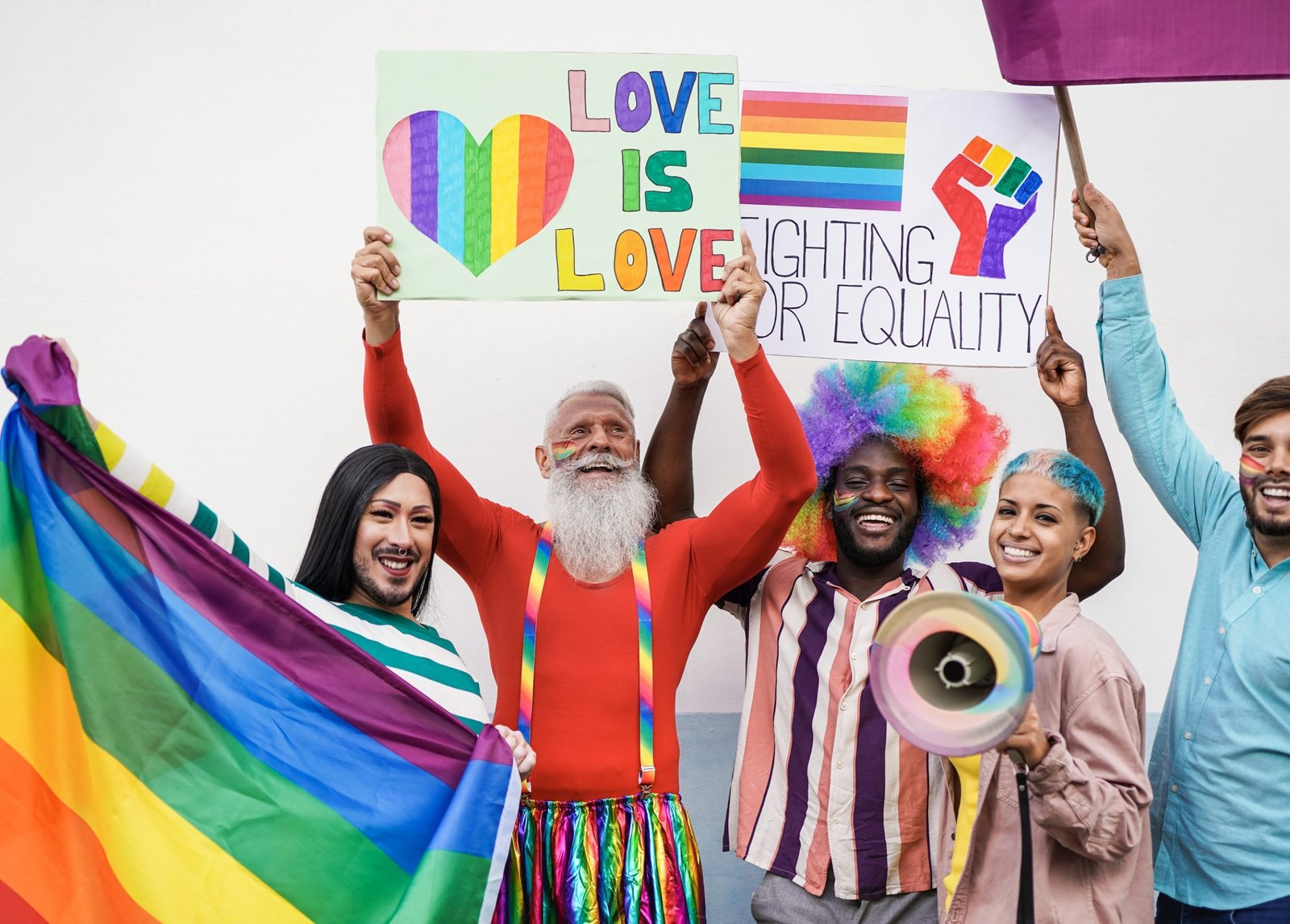TO In June, the appointment with the parade will take place in various cities Pride which, as the term suggests (literally pride parade), represents the public event created for the purpose of celebrating social acceptance and self-acceptance of lesbian, gay, bisexual, transgender, asexual, non-binary and queer peopleto assert their political rights
As every year, various criticisms are leveled against the parade, they are accused of ostentatiousness, lack of focus on the cause, aggression, or more often bad taste. However, the pride parade was born with a specific political purpose: to know its history is to understand why it is not a carnival.
How and why the pride parade was born
The Pride tradition was born after June 27, 1969, when police raided the Stonewall Inn gay club in New York under the guise of checking the liquor license: in reality, the club’s regular customers were intimidated and forcibly removed. Sylvia Rivera, a transgender who later became a symbolic activist, started the protest, which was attended by many people, even those who came from the street: the rebellion culminated in a real urban guerrilla.
Awareness and anger shared for the first time, and pride parades, every year in June pride monthremember this protest by elevating it to a moment of celebration, gathering and reflection.
The central message of the event is that a civil and democratic country it must no longer tolerate discrimination and denial, but pursue full equality and freedom for all
However, many people consider the festive attitude is not serious – therefore guilty – and not at all worthy of conveying any message: Pride would therefore be a flamboyant parade that wants to violate public decency, when in fact it is the recovery of persecuted identities as not guilty in themselves, but victims of a system that can be changed.
Why Pride isn’t “a not-so-trustworthy carnival”
The most common criticism leveled at Pride it is that of being a carnival.
There are those who question, for example, the credibility of the civil battles that take place every day and that on the occasion of Pride are remembered based on I put colorful and festive of the participants:
we’d hear you more if you paraded in a suit and tie
This statement, however, ignores two aspects: the first is that people belonging to the LGBTQIA+ community are often forced in their daily lives to wear neutral or clothes that are considered normal. to avoid discrimination or to escape acts of homophobia. The second has to do with the attempt to normalize the identity of the community: if the people who belong to it are subject to the implicit obligation to follow – even in their appearance – the standard that is considered “neutral” or “normal”, they would manage to mess with the people who actually have a say in the matter to change things.

The idea that Pride wants to undermine is precisely this, and to affirm instead that even what is now considered a disadvantage—that is, not following the rule of “normal” decided by the majority—can expand the right of speech to the communities that until now had to keep silent or be condemned to non-existence.
Not only can you be different, but you also declare yourself ready to accept any way of being. Pride, indeed, lies in refusing to accept being invisible in order to exist
Deconstructing privilege
To those who oppose “then let’s do a hetero pride too» we must answer that it already exists: every day indeed, our heterotypical reality parades before our eyes.

Cultures
8 Pioneers of LGBTQ+ Movements We Still Need to Thank Today
In fact, among the goals of Pride is certainly not the challenge, but rather visibility, safety given by other allies and the numberswhich seek to normalize the minority in the eyes of the majority.
However, stereotypes are also alive in the statements of those who belong to the community and decide to protest the demonstration because it is counterproductive: “they will never love us like that». A blind vision, this one, which in addition to not helping the other members of the community is disturbed by a crisis of form: the goal is not to love but to make noise. It does not become the norm but becomes part of what is acceptable. rather than necessarily sympathize, rejecting systematic and unjust hatred.
After all, there’s nothing wrong with being born on the wrong side of privilege. However, when you’re not born male, white, straight, cisgender, able-bodied and conforming, middle-class, and in the right part of the world, it is precisely this right world that constantly reminds us of it.
In fact, all words used to define identities other than winner have become insults, ever since privilege hates its opposite.
The historical and commemorative conditions Pride is certainly not to be underestimated and, instead, they explain why display is necessary and, above all, why it must be visible and anything but tame or condescending:
Rights are not gracious concessions from the majority to a minority that must demonstrate greater morality
Pride, then, is not a carnival: participating in the parade means taking off the masks, in the face of the hypocrisies of a society that is still deeply biased.

